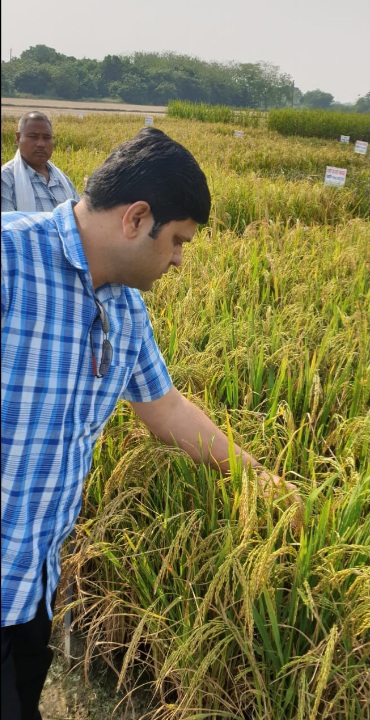Kushinagar, 14 December: The Kalanamak rice donated by the Prime Minister Narendra Modi as Buddha’s Mahaprasad at the International Buddhist Conclave held in Kushinagar on October 20 will soon be available for sale in the world market.
According to the wishes of the Prime Minister, scientists under the leadership of Dr AK Singh, Project In-charge of Indian Agricultural Research Institute (IARI), Pusa, are doing research to increase the production of this rice with distinctive taste and aroma.
Areas with potential for production of Kalanamak rice in a specific area and in limited quantities have been identified. Work is going on to improve the seed and make it more productive in less time.
Under research, field research is being done by establishing Geographical Indication Areas in Gonda, Faizabad, Basti, Chowkmafi in Gorakhpur, PPganj, Belipar, Maharajganj, Severhi in Kushinagar and Bhatparrani in Deoria of Eastern UP. In future, farmers of this region will get an improved variety of rice.
Actually, the traditional variety of this rice has many flaws. Its plants are five to six feet in height, which are unable to survive and fall to the ground. Others, even if the plants survive, mature in 160-170 days. The emphasis in research is that the plant should be normal which does not fall and the growth interval should come down to 130-135 days. Till now this rice was grown only in Siddharthnagar area. The plan is to produce it in all the districts of Purvanchal.
Agricultural scientist Dr Vaibhav Kumar Singh told that Gautam Buddha is considered to be the father of this rice. 2500 years ago in present Siddharthanagar, he started farming by giving seeds of this rice to the farmers. Due to its association with Buddha and its distinctive taste and aroma, this rice is famous among Buddhist followers as ‘Gift of Buddha’.
Research is going on under the Kalanamk Rice Improvement Program. Field research is being done by developing Geographical Indication Areas at a dozen places in Eastern UP. Efforts are being made to improve the traditional varieties of black salt so that the production of this rice increases in the days to come.





